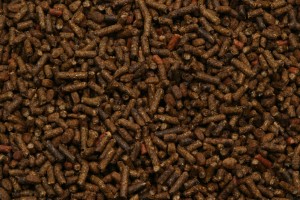Five Myths of Horse Nutrition

As researchers and feed companies alike continue to make progress in understanding nutrition, more and more once-commonly held beliefs about horse feed are becoming obsolete. Here are five common misconceptions about horse nutrition and what it means for you.
- MYTH #1 : Horses don’t need ‘grain’
- Most horse owners judge the effectiveness of their feeding program based on the weight of their horse(s). Given good quality pasture or hay, the majority of idle horses will appear to do just fine without additional supplementation. Though this is a good foundation to start from, it is important to consider other health factors influenced by nutrition, such as hoof quality, muscle development, maintenance, performance and bone integrity.
- Providing your horse a feed that delivers the appropriate levels of amino acids, vitamins and minerals is the foundation for good nutritional health. Most forages are either deficient or counterbalanced in many of these important micronutrients and offering a commercially balanced feed that is compatible will provide your horse what he needs to meet his minimum requirements. A ration balancer provides this type of nutritional supplementation without adding calories.
- MYTH #2 : All pelleted feeds contain floor sweepings
- In the early days of pelleted horse feeds, this was probably based in reality more times than not. Today however, it is not a common practice. A reputable feed manufacturer will have stringent quality control programs in place such as HACCP (Hazardous Awareness and Critical Control Points) that prohibit the use of any material that is not an approved ingredient.
- In addition, the traceability of ingredients used in feeds is increasing in importance as the ingredient supply is stretched between feed, food and fuel. Increased traceability means less chance of non-approved ingredients being included in pellets. The bottom line: good quality control practices in the industry means quality ingredients and products you can trust.
- Finally, using poor quality ingredients is just bad business. Think about it this way: if a feed company manufactured a poor quality feed that animals did poorly on, than owners would stop purchasing it. It is in the best interest of everyone involved to make quality feed from the start.
- MYTH #3: Ingredient by-products are fillers
- By-products such as wheat midds, soy hulls and corn germ meal are derived from the milling or processing of grains generally for food production. For example, wheat midds are the husks remaining from flour milling, soy hulls are the husks of soybeans derived in the crush process for soy oil and beet pulp is a by-product of the sugar extraction process from sugar beets. All of these by-products contain valuable nutrients that are readily available for digestion.
- Because they are involved in the processing of ingredients for food, there is also quite a bit of variation in the levels of nutrients from differing suppliers or between loads. A reputable feed company will test in-bound ingredients to ensure they contain quality nutrient levels, and then formulate their use based on what they provide. Ask your feed manufacturer how they monitor and control the quality of ingredients coming into their feed mill.
- MYTH #4: Corn is bad for horses
- Feeding corn to horses does come with inherent risks. First of all, certain strains of molds commonly found growing on corn create toxins called aflatoxins. It is important that any feed maker test in-bound loads of corn to detect and reject loads based on the level of these toxins present.
- Whole corn contains somewhere around 65% starch which, if consumed in large quantities, could overwhelm the digestive tract of the horse. Corn is however, an energy-dense ingredient, making it a highly available and desirable ingredient to provide energy in a feed ration.
- When fed alone, corn, like any other single grain is not nutritionally balanced to meet a horse’s needs. However, when provided as an ingredient in an overall balanced feed, it makes an excellent part of the makeup of the whole feed. When sourced, tested, processed and managed correctly, corn can bring many benefits to horse nutrition.
- MYTH #5: Protein makes horses ‘hot’
- We as horse owners have been programed to seek out a feed which provides a protein percentage that we believe our horses need, based on something someone somewhere told us. Maybe it was mom. Maybe it’s what worked for grandpa’s horses. Whatever the source, you may be surprised to hear that protein does NOT make horses ‘hot’. In fact, horses don’t even need protein; rather, their nutritional requirements are for the amino acids called Lysine, Methionine and Threonine. These are the building blocks of protein.
- Protein is the least efficient energy source for horses, as compared to fiber, Non-Structural Carbohydrates (NSC) and fats. The metabolic pathways which convert protein into energy actually burns a lot of energy to convert (as compared to fiber for example), creates waste and is particularly hard on the kidneys when fed above requirements. Ammonia production is an output of excess protein digestion; for a stable full of horses, this can have a huge impact.
- As you consider protein in your horse’s diet, be sure to check that the feed provides guaranteed levels of Lysine, Methionine and Threonine. This way, you know your horse will be meeting his nutritional requirement.
The study of nutrition has come a long way in the last 20 years and will continue to evolve thanks to investments in research and development. Who knows what myths we’ll debunk in 20 years?!
